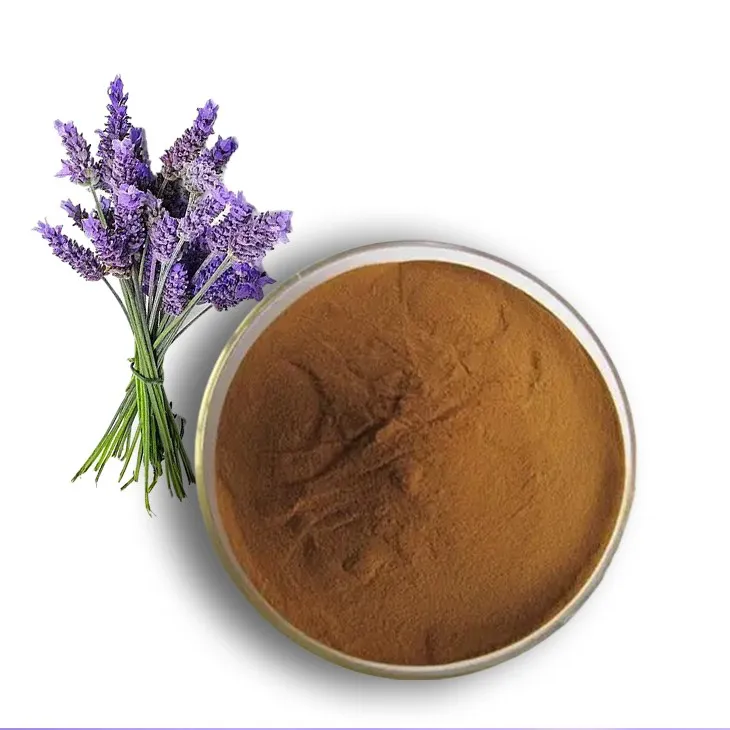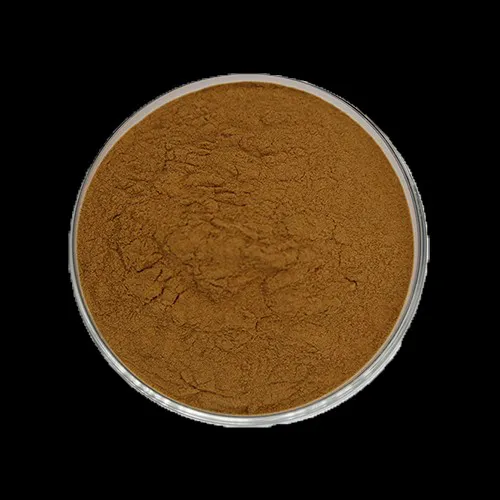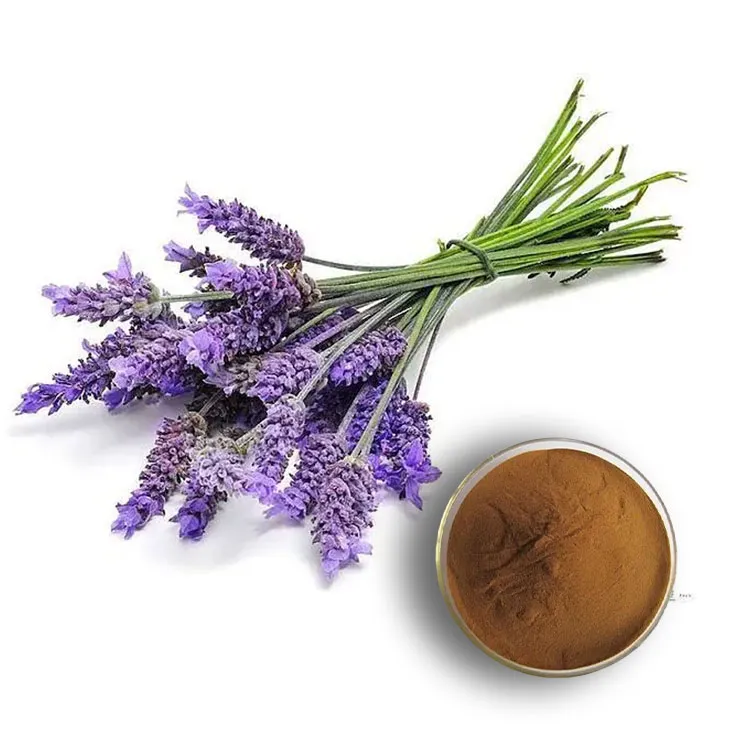- 0086-571-85302990
- sales@greenskybio.com
Lavender Extract: From Leaves to Extraction.
2024-11-12

1. Introduction to Lavender
Lavender is a well - known and highly regarded plant in the botanical world. It belongs to the Lamiaceae family and is native to the Mediterranean region, although it is now cultivated in many parts of the world. The plant is characterized by its slender, gray - green leaves and beautiful, fragrant purple flowers. Lavender has been used for centuries for its various properties, including its pleasant aroma, medicinal qualities, and use in cosmetics.

2. The Importance of Lavender Leaves
2.1. Chemical Composition
The leaves of the lavender plant contain a variety of important chemical compounds. These include essential oils, flavonoids, and tannins. The essential oils are particularly significant as they are responsible for the characteristic scent of lavender. They also possess many beneficial properties such as antimicrobial, anti - inflammatory, and antioxidant effects. Flavonoids in the leaves contribute to the plant's overall health - promoting abilities, while tannins can have astringent properties.2.2. Role in the Plant
Lavender leaves play a crucial role in the plant's physiological processes. They are involved in photosynthesis, which is essential for the plant's growth and development. The leaves also help in transpiration, the process by which water is evaporated from the plant, which helps in regulating the plant's temperature and nutrient uptake.
3. Selection of Lavender Leaves
3.1. Quality Criteria
When selecting lavender leaves for extraction, several quality criteria must be considered. The leaves should be fresh, free from diseases and pests, and of the appropriate maturity. Young leaves may not have fully developed their chemical compounds, while overly mature leaves may have started to degrade. The color of the leaves should be a healthy gray - green, and they should have a strong, characteristic lavender scent.3.2. Sourcing
Lavender leaves can be sourced from different regions depending on the variety of lavender. For high - quality extracts, it is often preferred to source from regions where the climate and soil conditions are optimal for lavender growth. For example, in France, the Provence region is renowned for its high - quality lavender production. However, lavender is also grown successfully in other parts of the world such as England, Australia, and the United States.
4. Handling and Preparation of Lavender Leaves
4.1. Harvesting
The timing of harvesting lavender leaves is crucial. It is typically done during the plant's growth period when the leaves are at their peak in terms of chemical composition. Harvesting is usually done by hand to ensure that only the appropriate leaves are selected. This also helps in minimizing damage to the plant. Once harvested, the leaves need to be processed quickly to prevent any loss of their valuable compounds.4.2. Cleaning
After harvesting, the lavender leaves need to be thoroughly cleaned. This involves removing any dirt, debris, or other foreign matter. Cleaning can be done using gentle washing methods to avoid damaging the leaves. Once cleaned, the leaves are dried. Drying can be done naturally in a well - ventilated area or using specialized drying equipment. The aim is to reduce the moisture content of the leaves without losing their essential oils and other compounds.4.3. Crushing and Grinding
In some extraction methods, the dried lavender leaves are crushed or ground to increase the surface area available for extraction. This can be done using mechanical crushers or grinders. However, care must be taken not to over - process the leaves as this could lead to the degradation of some of the valuable compounds.5. Extraction Methods
5.1. Steam Distillation
Steam distillation is one of the most common methods used to extract Lavender Extract from its leaves. In this process:- The dried and prepared lavender leaves are placed in a distillation apparatus.
- Steam is passed through the leaves. The steam helps to break down the cell walls of the leaves and release the essential oils and other volatile compounds.
- The mixture of steam and volatile compounds is then condensed. As the steam cools, it turns back into liquid, and the essential oils and other compounds separate out.
- The resulting liquid, which contains the Lavender Extract along with water, is then further processed to separate the extract from the water. This can be done using techniques such as decantation or using a separating funnel.
5.2. Solvent Extraction
Solvent extraction is another method used for Lavender Extraction. Here are the steps involved:- A suitable solvent, such as hexane or ethanol, is selected. The choice of solvent depends on the type of compounds to be extracted and the intended use of the extract.
- The dried lavender leaves are soaked in the solvent. The solvent penetrates the cells of the leaves and dissolves the desired compounds.
- After a period of soaking, the solvent - containing the dissolved compounds is separated from the solid plant material. This can be done using filtration or centrifugation.
- The solvent is then evaporated to leave behind the lavender extract. However, it is important to ensure that all traces of the solvent are removed as some solvents may be harmful if present in the final product.
5.3. Comparison of Extraction Methods
- Steam distillation is a more traditional method and is often favored for producing essential oils. It has the advantage of being a natural process that does not introduce any potentially harmful solvents into the extract. However, it may not be as effective in extracting some non - volatile compounds.
- Solvent extraction can extract a wider range of compounds, but it requires strict control over solvent use and removal. There is also a risk of solvent residues remaining in the final product if not properly managed.
6. Applications of Lavender Extract
6.1. In Perfumes
Lavender extract is a popular ingredient in perfumes. Its unique and pleasant scent adds a fresh, floral note to perfumes. It can be used as a top note, middle note, or base note depending on the desired fragrance profile. In addition to its pleasant smell, the antimicrobial properties of lavender extract can also help in preserving the quality of the perfume.6.2. Skincare Items
In skincare, lavender extract has numerous benefits.- It has anti - inflammatory properties, which can be beneficial for reducing redness and irritation in the skin. This makes it suitable for use in products for sensitive skin.
- The antioxidant properties of lavender extract can help in protecting the skin from free - radical damage, which can lead to premature aging.
- It can also be used in products for acne - prone skin as it has antimicrobial properties that can help in fighting the bacteria that cause acne.
6.3. Herbal Remedies
Lavender extract has a long history of use in herbal remedies.- It can be used to relieve stress and anxiety. The pleasant aroma of lavender has a calming effect on the nervous system, and when used in products such as aromatherapy oils or herbal teas, it can help in reducing stress levels.
- For headaches, lavender extract can be applied topically or inhaled. It has a mild analgesic effect that can help in relieving headache pain.
- In some cases, lavender extract has been used to aid in sleep. Placing a sachet of lavender near the pillow or using lavender - scented products in the bedroom can promote a more restful sleep.
7. Conclusion
The journey from lavender leaves to extraction is a complex and multi - faceted process. The careful selection, handling, and preparation of the leaves are crucial steps in obtaining high - quality lavender extract. Different extraction methods offer various advantages and can be chosen depending on the intended use of the extract. The wide range of applications of lavender extract, from perfumes to skincare items and herbal remedies, further highlights the importance and value of this remarkable plant extract.
FAQ:
1. What are the main characteristics of lavender leaves?
Lavender leaves are typically slender and green. They have a characteristic aroma which is part of the overall fragrance of the lavender plant. The leaves also contain various chemical compounds that are important for the production of lavender extract.
2. Why is the selection of lavender leaves important in the extraction process?
The quality of the final lavender extract depends on the quality of the leaves used. Selecting the finest lavender leaves ensures a higher concentration of the desired compounds. High - quality leaves are less likely to be damaged or diseased, which can affect the purity and effectiveness of the extract.
3. How does steam distillation work in the extraction of lavender?
Steam distillation involves passing steam through the lavender leaves. The heat from the steam causes the volatile compounds in the leaves to vaporize. These vapors are then condensed back into a liquid form, which is the lavender extract. This method is effective in separating the essential oils and other valuable compounds from the plant material.
4. What are the advantages of solvent extraction for lavender?
Solvent extraction can be more efficient in extracting certain compounds that may not be easily obtained by steam distillation. It can also produce a more concentrated extract. However, it requires careful handling of the solvents to ensure the safety and purity of the final product.
5. In which skincare products can lavender extract be found?
Lavender extract can be found in a variety of skincare products such as moisturizers, face masks, and anti - acne creams. It is often used for its soothing and anti - inflammatory properties, which can help to calm irritated skin and reduce redness.
Related literature
- The Chemistry and Therapeutic Properties of Lavender Extract"
- "Lavender: From Plant to Product - A Comprehensive Review of Extraction Techniques"
- "Advances in Lavender Leaf - Based Extracts for Perfumery and Cosmetics"
- ▶ Hesperidin
- ▶ Citrus Bioflavonoids
- ▶ Plant Extract
- ▶ lycopene
- ▶ Diosmin
- ▶ Grape seed extract
- ▶ Sea buckthorn Juice Powder
- ▶ Fruit Juice Powder
- ▶ Hops Extract
- ▶ Artichoke Extract
- ▶ Mushroom extract
- ▶ Astaxanthin
- ▶ Green Tea Extract
- ▶ Curcumin
- ▶ Horse Chestnut Extract
- ▶ Other Product
- ▶ Boswellia Serrata Extract
- ▶ Resveratrol
- ▶ Marigold Extract
- ▶ Grape Leaf Extract
- ▶ New Product
- ▶ Aminolevulinic acid
- ▶ Cranberry Extract
- ▶ Red Yeast Rice
- ▶ Red Wine Extract
-
Kidney Bean Extract
2024-11-12
-
Genistein
2024-11-12
-
Lily extract
2024-11-12
-
Eucommia Ulmoides Extract
2024-11-12
-
Feverfew Extract
2024-11-12
-
Green Tea Extract
2024-11-12
-
Nutmeg Extract
2024-11-12
-
Cat Claw Extract
2024-11-12
-
Honeysuckle Pollen
2024-11-12
-
Angelica sinensis extract
2024-11-12





















